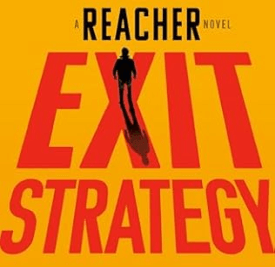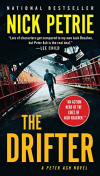R.T. Campbell / Ruthven Todd Books In Order
Book links take you to Amazon. As an Amazon Associate I earn money from qualifying purchases.Publication Order of Professor John Stubbs Books
| Unholy Dying | (1945) | Description / Buy at Amazon |
| Adventure with a Goat | (1946) | Description / Buy at Amazon |
| Bodies in a Bookshop | (1946) | Description / Buy at Amazon |
| The Death Cap | (1946) | Description / Buy at Amazon |
| Death for Madame | (1946) | Description / Buy at Amazon |
| Swing Low, Swing Death | (1946) | Description / Buy at Amazon |
| Take Thee A Sharp Knife | (1946) | Description / Buy at Amazon |
Publication Order of Standalone Novels
| Over The Mountain | (1939) | Description / Buy at Amazon |
| The Laughing Mulatto | (1939) | Description / Buy at Amazon |
| The Lost Traveller | (1943) | Description / Buy at Amazon |
| Apollo Wore a Wig | (1946) | Description / Buy at Amazon |
| Loser's Choice | (1953) | Description / Buy at Amazon |
Publication Order of Collections
| Garland for the Winter Solstice | (2000) | Description / Buy at Amazon |
Publication Order of Non-Fiction Books
| Tracks In The Snow | (1946) | Description / Buy at Amazon |
| William Blake The Artist | (1971) | Description / Buy at Amazon |
Publication Order of Space Cat Books
| Space Cat | (1952) | Description / Buy at Amazon |
| Space Cat Meets Mars | (1952) | Description / Buy at Amazon |
| Space Cat Visits Venus | (1955) | Description / Buy at Amazon |
| Space Cat and the Kittens | (1958) | Description / Buy at Amazon |
Publication Order of Anthologies
R.T. Campbell / Ruthven Todd otherwise known as Ruthven Campbell Todd was a Scottish born novelist, poet, artist, and scholar of William Blake. Todd was born and raised in Scotland though he spent much of his itinerant and colorful life away from his homeland. He spent his time in the likes of Iowa, Fitzrovia London, El Terreno in Mallorca, Tilty Mill in Essex and Paris before he lived most of his final days in Galilea, a Spanish mountain village. Campbell was born the eldest of ten siblings in Edinburgh, where William Walker Todd his father was one of the most successful architects in town. Many members of the family held prestigious jobs in ministry, accounting and the legal profession. Given his family background, he had quite a privileged upbringing as he went on to attend Edinburgh College of Art and Fettes College. It was while he was in Art College that he began to go off the rails as he became a drunk. Concerned, his family sent him away to the Isle of Mull where he worked as a laborer, something his parents believed would straighten him out. When he left Mull he decided to go to London and worked at the International Surrealist Exhibition as an assistant secretary in 1936. He then moved to Paris and it was during this time that he met a host of famous friends that included the likes of Dylan Thomas, Joan Miro, David Gascoyne, Wyndham Lewis, and Salvador Dali.
When World War II broke out, Todd returned to Scotland alongside his wife and son and took up a job in civil defense. It was at this time that he began actively writing and publishing poetry in a range of magazines that included Geoffrey Grigson’s “New Verse Scottish Literary Renaissance”, and the “New Apocalypse” movement. While the Romantic Movement was huge during this time, Todd never joined it as he was simply looking to get published and earn a living. In 1944, he published “The Acreage of the Heart,” a poetry collection in the Poetry Scotland Series by William MacLellan. Since his father’s death in 1944 and the separation from his wife in 1943, he began moving between Tilty Mill, Essex, and London more frequently. He made a living doing journalism and copywriting and then wrote a series of crime fiction works that featured the popular Professor John Stubbs, a botanist cum sleuth. He published his novels under the pseudonym R.T. Campbell. John Westhouse the publishing company paid him £200 for each novel he submittefd. His friends said that he used to write a full novel in only a few weeks. During this time he also published “The Lost Traveler” and “Over The Mountain” both of which were on dystopian and fascist themes.
In 1947, he moved once again this time to the US where he became an American citizen in the 1950s. He worked as a professor teaching at universities such as Iowa and getting several fellowships such as the Guggenheim. He also supplemented his teaching income with the writing of commercial books. The most successful of his works during this time was the “Space Cat” children’s picture books that paid him royalties for many years. He died in 1978 from chronic lung disease that brought on multiple organ failure.
R.T. Campbell / Ruthven Todd’s Prof. John Stubbs series features the title character as a corpulent, opinionated, mustachioed pipe-smoking amateur criminologist. He constantly takes a swig of beer from a bottle to avoid severe dehydration. Writing as R.T. Campbell, he brings his amateur sleuth to life in several amusing and intriguing page-turners. The most interesting thing though is that the Professor has a lot in common with many other amateur sleuths yet is also very unique. Professor John Stubbs is something of Sir Henry Merrivale by Carr with a little of Dr. Gideon Fell to flesh him out. He is typically referred to as old man and is often seen drinking copious amounts of beer. He also has an uncanny resemblance to G.K. Chesterton though he is more of a caricature than a like for like lead.
“Swing Low, Swing Death” opens to a murder that is discovered in the modern art museum in London during the unveiling of a modern masterpiece. The dead man is a prominent art dealer that is found hanging on a picture hook. It is not an easy case for Professor Stubbs as there are too many suspects. These suspects include a nervous patron of the arts named Emily Wallenstein, Douglas Newsome the librarian, a pompous windbag and art critic Dr. Cornelius Bellamy, Alec Carr an Avant-Garde interior decorator and an always drunk poet. Ruthven Todd vividly captures post-war London atmosphere with his humorous and brisk writing. He brightens his story with droll allusions to the works of Shakespeare, T.S. Eliot, and Rudyard Kipling.
Ruthven Todd’s “Death for Madame” is a novel about Max Boyle, a man hoping that he can finally get to relax after the chaos and violence of the Second World War. As the assistant to the amateur detective, Max gets embroiled in the latest complication that involves Mr. Carr who is something of an amiable lunatic that is best friends with Stubbs. Mr. Carr’s sweet aunt who was the proprietor of Notting Hill, a tawdry hotel up the road had been found killed by strangling in her chair. She has bizarrely mentioned each boarder in her will and even weirder, all of them have weak alibis. Carr is the chief beneficiary and hence a lot of suspicion falls on him. Stubbs will do anything to exonerate his friend and butts into the investigation against the wishes of Chief Inspector Bishop. With his usual poetic turns of phrase and humor, Todd tells of how the Professor investigates a hard-boiled but seductive chambermaid, a financially down cousin and two jewel thieves.
“Bodies in a Bookshop” opens to Max Boyle the botanist happy with the bibliophile treasures he found on the little shop near Tottenham Court Rod. But his joy is cut short when he finds two dead bodies in a back room. He calls in Scotland Yard’s Chief Inspector Reginald F. Bishop, who then calls up the rotund amateur criminologist Professor John Stubbs. The beer-drinking and pipe smoking professor the protesting Boyle and the world-weary and skeptical Bishop would rather be soaking in the sun somewhere on vacation but duty calls. Their investigations soon find a lot of dark deeds and a web of skullduggery. The three work together and combine their enthusiasm and the friction of their personalities to navigate a web of the print and book emporia trying to find answers to a mystery that would baffle even the cleverest armchair detectives. Full of pungent observations, wit, and droll characters, it is one of the best novels by Ruthven Todd.
Book Series In Order » Authors »


 Any issues with the book list you are seeing? Or is there an author or series we don’t have? Let me know!
Any issues with the book list you are seeing? Or is there an author or series we don’t have? Let me know!